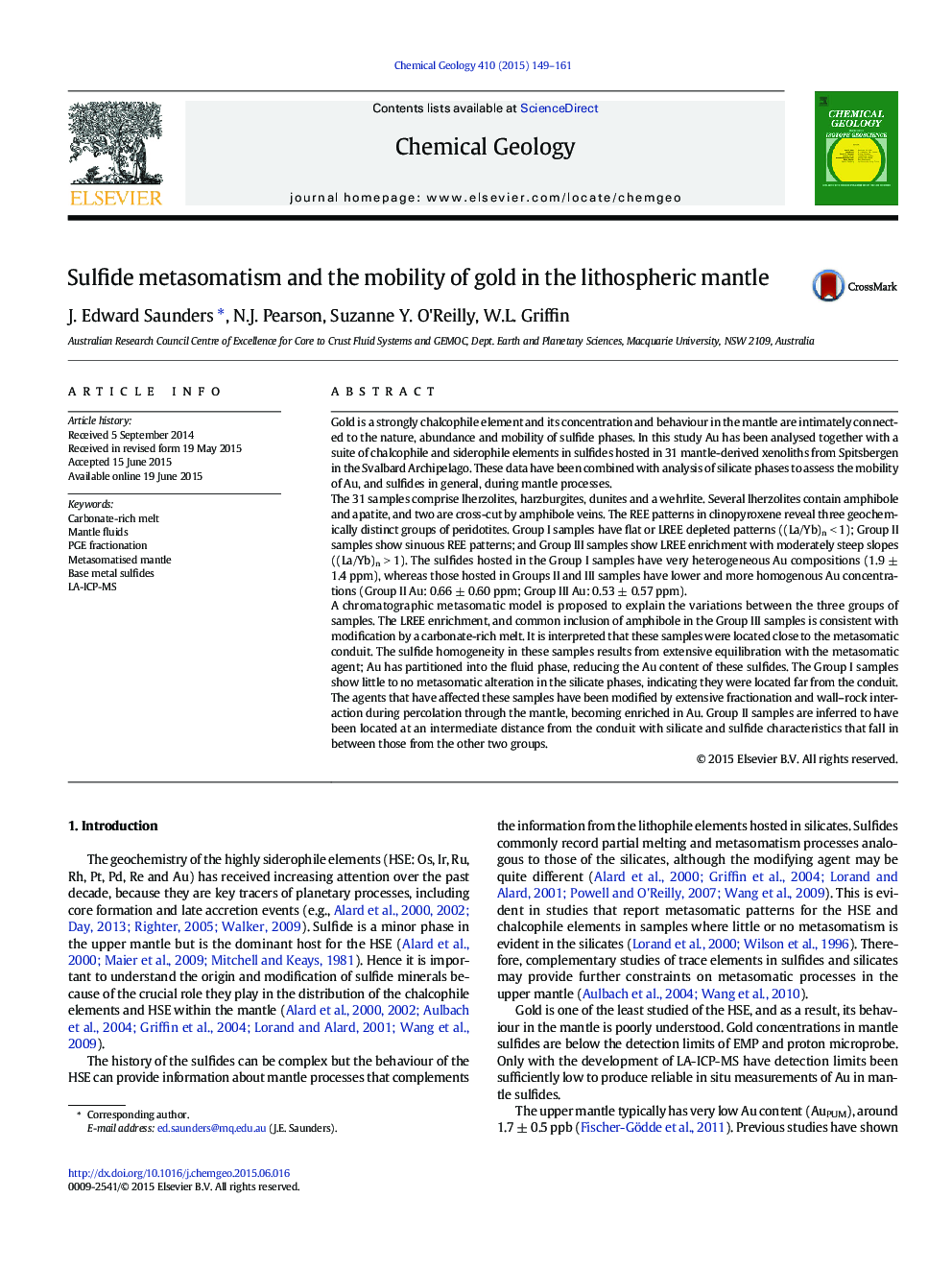| کد مقاله | کد نشریه | سال انتشار | مقاله انگلیسی | نسخه تمام متن |
|---|---|---|---|---|
| 4698491 | 1637564 | 2015 | 13 صفحه PDF | دانلود رایگان |
• Three geochemically distinct groups of samples identified in Spitsbergen SCLM
• Sulfide metasomatism explained through chromatographic column
• Gold contents of sulfides reduced during progressive metasomatism of peridotites
• Sulfides homogenised by extensive mantle metasomatism
• Old Re–Os age destroyed by strong metasomatism, obscured even by weak metasomatism
Gold is a strongly chalcophile element and its concentration and behaviour in the mantle are intimately connected to the nature, abundance and mobility of sulfide phases. In this study Au has been analysed together with a suite of chalcophile and siderophile elements in sulfides hosted in 31 mantle-derived xenoliths from Spitsbergen in the Svalbard Archipelago. These data have been combined with analysis of silicate phases to assess the mobility of Au, and sulfides in general, during mantle processes.The 31 samples comprise lherzolites, harzburgites, dunites and a wehrlite. Several lherzolites contain amphibole and apatite, and two are cross-cut by amphibole veins. The REE patterns in clinopyroxene reveal three geochemically distinct groups of peridotites. Group I samples have flat or LREE depleted patterns ((La/Yb)n < 1); Group II samples show sinuous REE patterns; and Group III samples show LREE enrichment with moderately steep slopes ((La/Yb)n > 1). The sulfides hosted in the Group I samples have very heterogeneous Au compositions (1.9 ± 1.4 ppm), whereas those hosted in Groups II and III samples have lower and more homogenous Au concentrations (Group II Au: 0.66 ± 0.60 ppm; Group III Au: 0.53 ± 0.57 ppm).A chromatographic metasomatic model is proposed to explain the variations between the three groups of samples. The LREE enrichment, and common inclusion of amphibole in the Group III samples is consistent with modification by a carbonate-rich melt. It is interpreted that these samples were located close to the metasomatic conduit. The sulfide homogeneity in these samples results from extensive equilibration with the metasomatic agent; Au has partitioned into the fluid phase, reducing the Au content of these sulfides. The Group I samples show little to no metasomatic alteration in the silicate phases, indicating they were located far from the conduit. The agents that have affected these samples have been modified by extensive fractionation and wall–rock interaction during percolation through the mantle, becoming enriched in Au. Group II samples are inferred to have been located at an intermediate distance from the conduit with silicate and sulfide characteristics that fall in between those from the other two groups.
Journal: Chemical Geology - Volume 410, 2 September 2015, Pages 149–161
